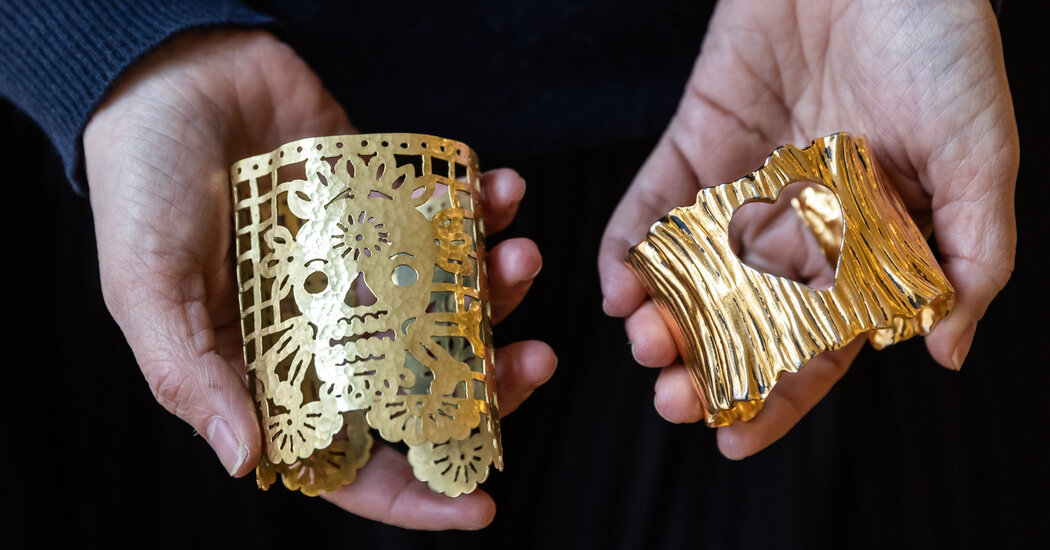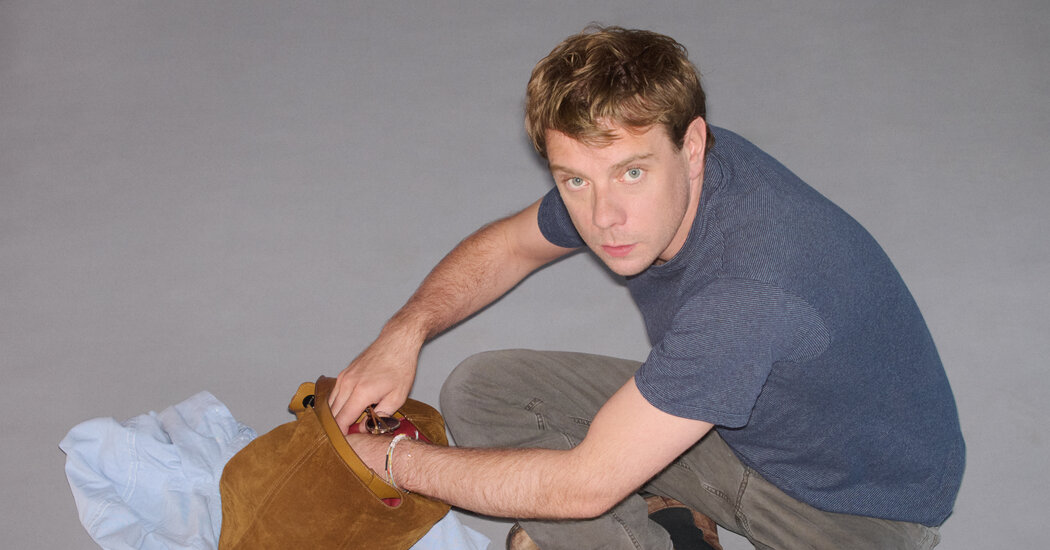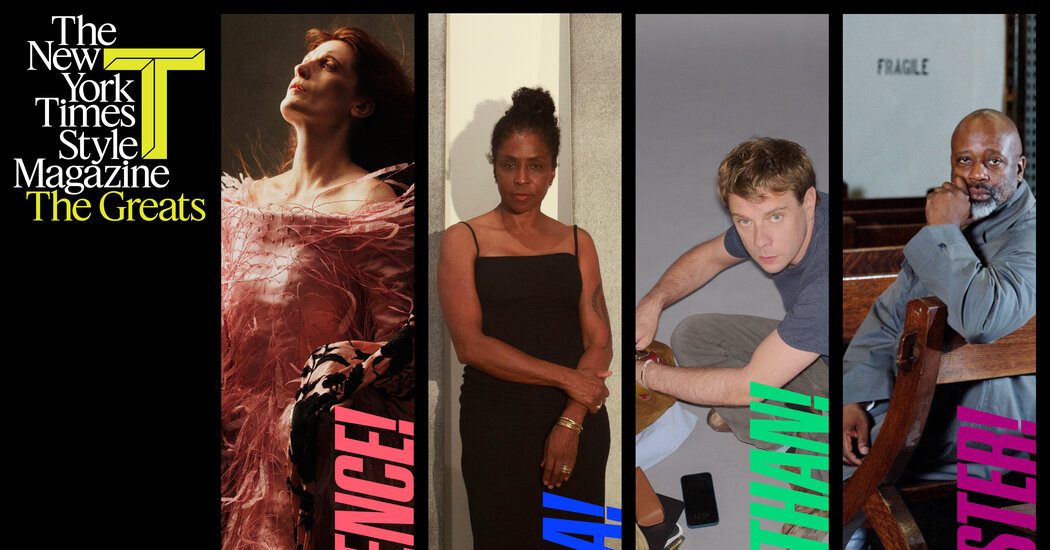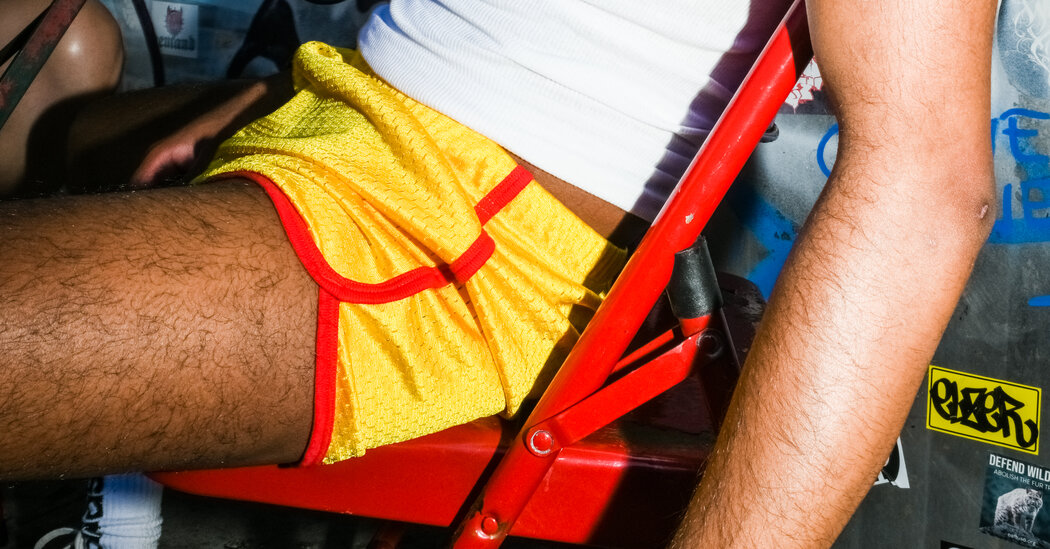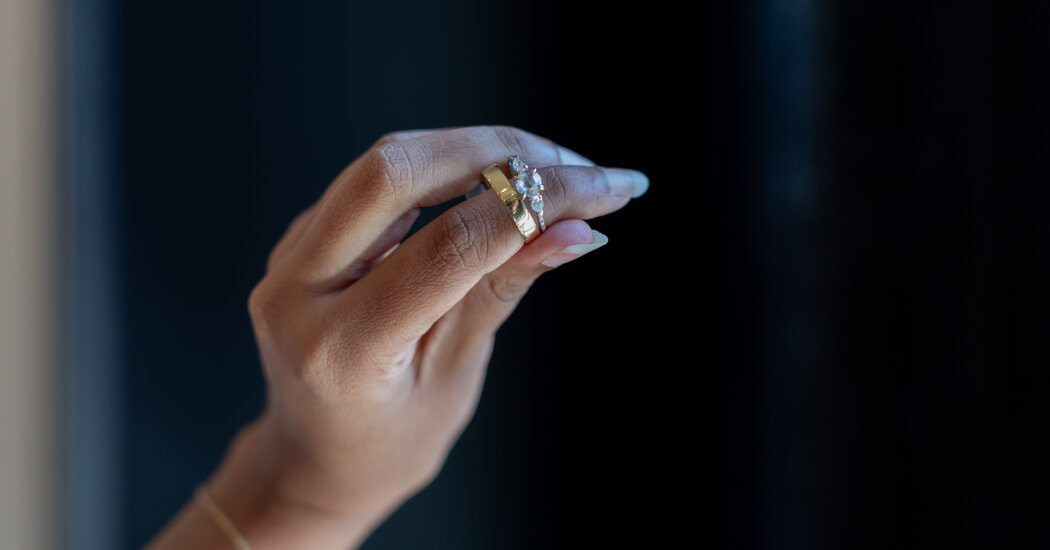When Lyndsey Ingram hosts dinners at her namesake gallery in the Mayfair district of London, the art on her walls initially grabs her guests’ attention. But by the time they are seated at the table, it is her Saint Laurent goldtone metal cuff with a cutout heart that fascinates them.
“I often find myself taking it off and passing it round,” she said of the cuff, which she bought for 350 pounds ($442) on the Matches website in 2021 and, on this day, was wearing over the sleeve of her Eric Bompard cashmere sweater.
It is “the last thing I put on before I go out the door,” she said. “Because it’s like armor. You need it when you are out of the house.”
Little wonder that cuffs are expected to make a big statement this spring.
Take the oversize 18-karat brushed yellow gold cuff featuring a large slice of opal, more than 54 carats of Paraiba tourmalines and other colored gems ($125,000), designed by Margot McKinney, a jeweler in Brisbane, Australia. Or the 18-karat yellow gold Owl Bangle, with huge kaleidoscope-pattern eyes, sapphire and diamond accents and gold wings that curve around the wearer’s wrist ($70,000), created by Lauren Harwell Godfrey of California’s Marin County. Or the architectural Waved Goldtone Arm Cuff, in brass, by Julien Dossena for the Paris fashion house Rabanne ($690).
And then there is the Aïda cuff in orange enamel and orange spessartines ($109,500) because, the Beirut jeweler Selim Mouzannar said, “the color is hot.”
Always the Same
The cuff’s significance as jewelry, according to Jean Ghika, global director of jewelry at Bonhams auction house in London, lies in its ancient beginnings as “a status symbol” in Roman and Greek times. Its design has remained the same ever since, said Barbara Paris Gifford, the senior curator of contemporary art, craft and design at the Museum of Arts and Design in New York City, which has 18 cuffs in its collection. “The only way that they have evolved over time is the kinds of materials that have been used since, like tortoiseshell in the Victorian era or plastics or whatever in our era,” she said.
Cuffs were particularly popular in the early 20th century, Ms. Ghika said, “when women’s dress changed dramatically.” In the 1920s, for example, the shipping heiress Nancy Cunard was often seen — and photographed — with her arms stacked in African ivory cuffs and bangles. And the Maltese cross design of Coco Chanel’s cuffs, created by Verdura, endures as one of her fashion house’s recurring motifs.
But of course the design played a far more prominent role in cultures other than those in the West. Consider the British Museum’s collection of ivory and metal cuffs made between the 16th and 19th centuries by the Edo people of what is now Benin. And India’s maharajahs also wore cuffs, “as a symbol of their power,” said Magali Delgrange-Teisseire, head of jewelry and watches at Sotheby’s France.
Bridging the Gap
While the classic cuff design has a gap at the back so the wearer can get it on and off, some designers have bridged that space for security’s sake with a decorative clasp or other closing mechanism.
When Susan Gordon, a New York sculptor turned jewelry designer, made a 22-karat gold leaf cuff ($58,000), she created a flower to cover the gap, but ensured that it would open when a particular petal was pressed. If she had kept the classic structure, Ms. Gordon said, “and if someone took it on and off, it would snap.”
Then there is Luna Scamuzzi, a Milan architect turned jeweler who founded the brand Lucifer Vir Honestus (the name of the first recorded Milanese goldsmith in Latin, which translates to “Lucifer is an honest man,” she said). She placed a detachable frog of diamond-accented fossil ivory across the back of her new 14-karat rose gold cuff, a one-of-a-kind piece ($15,750).
She said she began by carving the cuff shape in wax and then using a small torch to melt its surface, “to give the idea of a textured effect.” Once she was happy with the design, she had a local workshop cast it and then worked with her in-house goldsmith at her atelier to finish and polish the piece.
A Big Canvas
The relatively large surface area of cuffs appeals to designers. “You have more space to express yourself,” said Lorenz Baümer, the founder of Baümer Vendôme in Paris.
He used that surface on a unique high jewelry piece, scheduled for introduction this fall, that depicts fireworks over a jungle. Inspired by woodcuts, the design’s yellow gold outline on top of blackened white gold makes the cuff look layered, “and almost embroidered,” he said.
Alexis Bittar, a designer in New York City, said the surfaces of the cuffs he introduced last month “have more detail or more color impact” than other bracelets. He also cited his 2-inch-wide Solanales cuff, a 14-karat gold-plated piece with pavé crystals ($375). “There is a rhodium plating where it is white, where the pavé is, so you really get that effect of two colors and the pavé really stands out,” he said.
Julian Medwell, a senior designer at the London jeweler David Morris, said the 138 pieces that composed its new 18-karat white gold Starburst cuff (price on application) really pushed the company’s engineering prowess. “Each little section has to be individual,” he said, and “fit perfectly like a jigsaw puzzle with a little bit of space, just enough to open and close it again.”
It took a year, he noted, for the design to go from his sketches, CAD drawing and 3-D print to setting the sapphires and diamonds, as well as the piece’s main 52.12-carat Paraiba tourmaline. The cuff was introduced in January, during Couture Week, at the jeweler’s Paris boutique.
Several designers say they have ambitious plans for their next cuffs, too.
Mr. Bittar has designed one that looks like a corset laced in metal, to mimic “the concept of visually tightening a cuff to your wrist by tying with a lace,” he wrote in a later WhatsApp message, noting it also would have “a subtle bondage reference.”
Childhood memories of his grandmother knitting him a scarf have inspired Mr. Mouzannar to knit gold wire into a wide cuff so that, he wrote in a later message, “we can play with the transparency and colors.”
Ms. Gordon’s plans are similar, but she intends to try inlaying resin with gold and diamonds. It is an unfamiliar substance, she said, “and giving that color, I think, would be exciting.”



